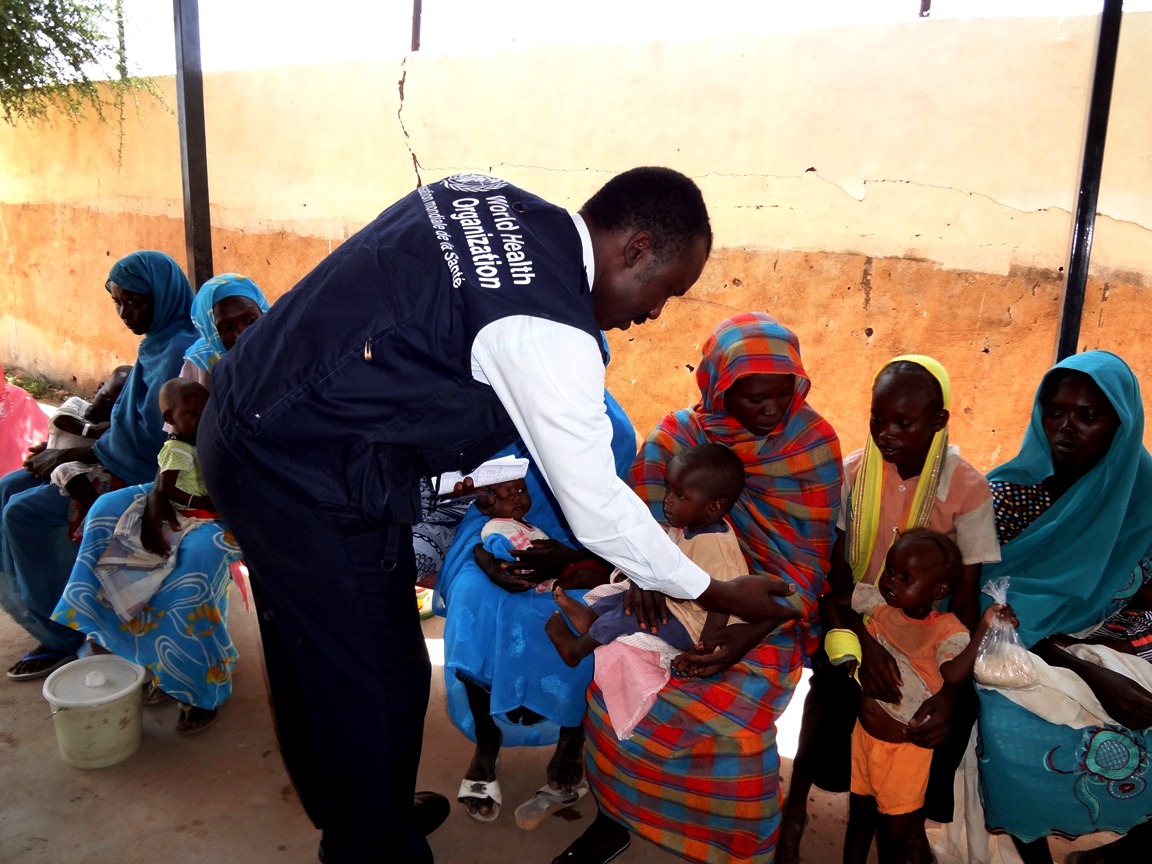
Meet the World Health Organization

Organizing for International Health
The story of the World Health Organization (WHO) begins in 1851, when, in response to cholera outbreaks across Europe, the first International Sanitary Conference convened in Paris, France. This was the first attempt to work together to combat a health crisis and prevent future epidemics. In 1892, the International Sanitary Conference adopted the first International Sanitary Convention to combat the cholera outbreaks, and five years later, a convention to combat the plague. The last International Sanitary Conference was held in Paris in 1938.
At the turn of the 20th century, three prominent health organizations formed: the Pan American Health Organization (PAHO), the world’s oldest health organization; L’Office International d’Hygine Publique; and the Health Organization of the League of Nations. The Health Organization collapsed with the League, but much of the infrastructure was used to bolster the World Health Organization when it was established by the UN in 1948. PAHO continues to exist today as a specialized agency of the WHO but L’Office International d’Hygine Publique was incorporated into the World Health Organization.
As negotiations about the new United Nations began, Representative Bertha Lutz from Brazil and Representative T.V. Soong from China insisted that the new body also include a health organization. In 1946, the Economic and Social Council instructed Secretary-General Trygve Lie to convene a conference with the aim of establishing an international health organization as part of the UN. Work commenced quickly and later that year, 16 Member States met in Paris to outline a proposal for this new organization.
Their proposals were considered at the International Health Conference in New York in 1946. There, 51 Member States of the United Nations and 10 other nations signed the Constitution of the World Health Organization and established an interim body to restart international health work until the constitution could be ratified. The WHO Constitution entered into force in April 1948.
How does the World Health Organization Work?
WHO is divided into three principal organs: The World Health Assembly, the Executive Board, and the WHO Secretariat.
The World Health Assembly meets annually and is the main decision and policy making body of the World Health Organization. It is composed of 194 Members (Lichtenstein is not a Member, and Cook Islands and Niue are full Members). Membership in the World Health Organization is open to all UN Member States and any other countries approved by majority of the World Health Assembly Members.
The World Health Assembly reviews a lengthy list of health challenges and potential responses, and divides this work between its plenary body and its two sub-committees. (Committee A focuses on technical and health matters and Committee B focuses on financial and management issues). The Committees draft the resolutions that the Plenary body reviews. Members of the World Health Assembly and the Director-General of the WHO also deliver reports to the plenary body.
The Executive Board is a smaller body that meets more regularly to review the work of the WHO and provides recommendations on its operations. Many substantive issues are addressed first in the Executive Board, which crafts recommendations and policy proposals that are then taken up by the World Health Assembly. The Executive Board is the body that we will simulate at AMUN 2018. Our WHO Executive Board will be similar to our other resolution-writing bodies.
Under the direction of the WHO Director-General, the Secretariat of the WHO is responsible for executing the work of the WHO set by the World Health Assembly. From the WHO headquarters in Geneva, the World Health Organization employs more than 7,000 people through six regional offices, working in 150 countries under a broad mandate to promote global health. Whether it’s from people in the field giving vaccinations, to setting comprehensive goals for regions and states, or educating through the use of social media or infographics, the WHO is one of the most active organs of the United Nations and is directly responsible for saving lives worldwide.
Examples of Work of the World Health Organization
It’s impossible to discuss the WHO and not acknowledge some of its many achievements. The WHO led the campaign to eradicate smallpox, which succeeded in 1977. It has similarly sought to eliminate polio and maternal and neonatal tetanus and is close to success. The WHO monitors global health, tracks diseases, and coordinates international responses to epidemics. WHO programmes bring vaccination to children worldwide, fights against tobacco use, and leads the fight against noncommunicable diseases like diabetes and cancer. The WHO responds to outbreaks of dangerous diseases, even in conflict regions, like responding to the recent outbreak of cholera in Yemen.
If you’re interested in keeping up-to-date on what the WHO is up to, subscribe to their newsletter, or follow their Facebook page. As always, keep an eye on AMUN’s Facebook page for more up-to-date and simulation-related news, including our weekly ICYMI features in the run up to Conference.
Keep Up With The Accords
More to read
The AMUN Accords is a premier resource for fact-based Model United Nations simulations. We are always looking for new contributors. Want to write for the AMUN Accords? Check out out the submission guidelines and then get in touch!





